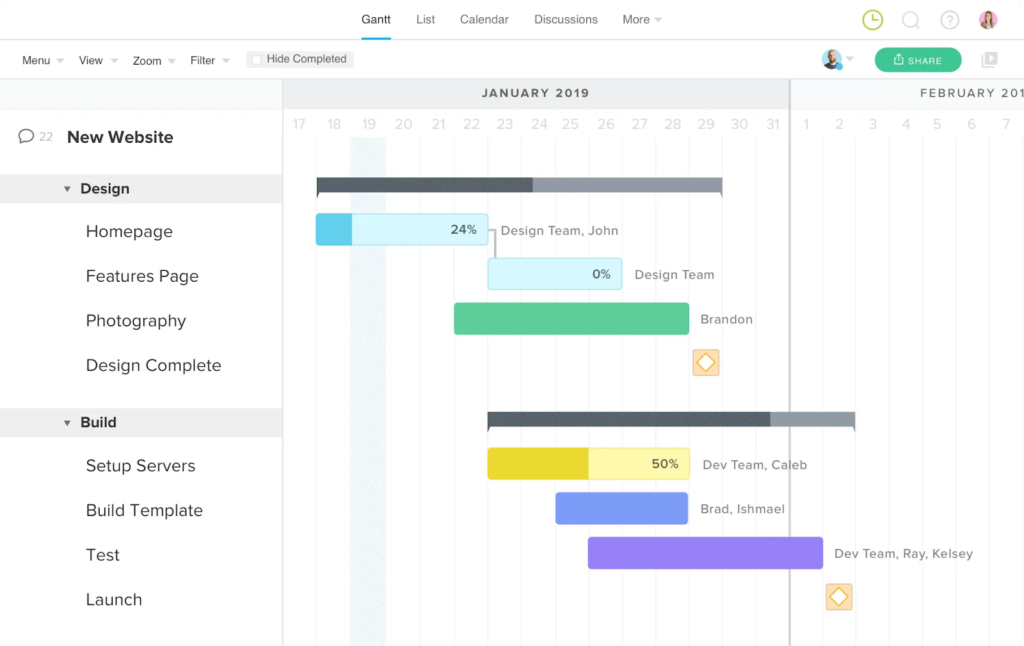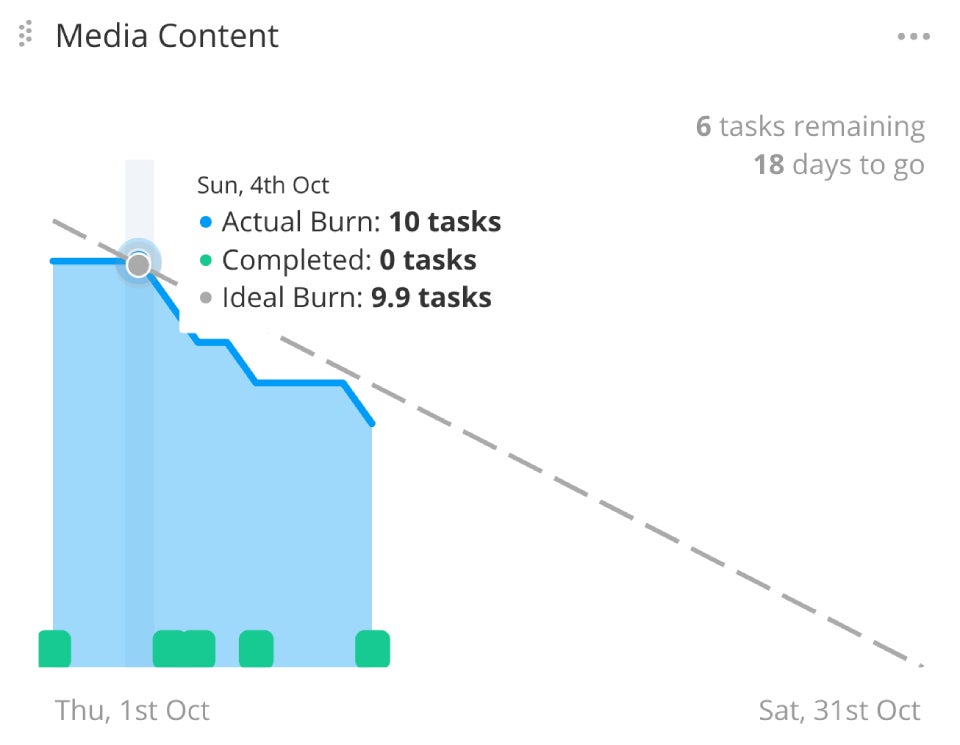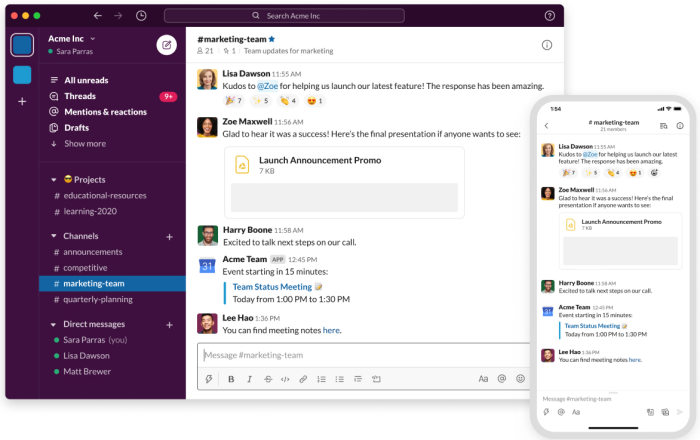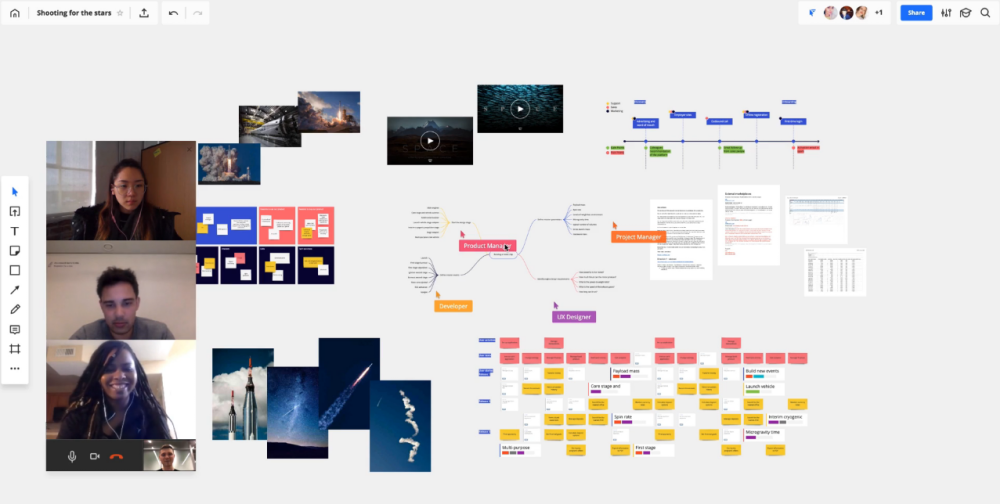
Our content and product recommendations are editorially independent. We may make money when you click links to our partners. Learn more in our Editorial & Advertising Policy.
project-management.com is able to offer our services for free because some vendors may pay us for web traffic or other sales opportunities. Our mission is to help technology buyers make better purchasing decisions, so we provide you with information for all vendors — even those that don’t pay us.
Core Features << FEATURES >> Integrations << INTEGRATIONS >>In order to better conceptualize what project management is, it’s helpful to understand how project management plays out in real-life applications. Here are a few examples of how project management is used across various industries every day:
Example One: Project Management in Construction
In 2005, BAA Airports Ltd. was presented with an enormous task: remodeling Terminal 1 within Heathrow Airport, the busiest international airport in the world while keeping the terminal open to the 20 million annual travelers that pass through the airport. The project was extremely complex, and made even more challenging by a strict deadline and significant public health concerns, given the construction project was taking place within an active terminal.
Throughout the project lifecycle, David Buisson, PMP, and the project manager in charge of the Heathrow renovation project, encountered many unexpected obstacles, including asbestos in the ceiling and inconsistencies with the floor level. Buisson and his team were able to properly navigate project challenges, operational risk, and communication management with key stakeholders. They successfully delivered the project on time and on budget—without any major mishaps—utilizing the PMBOK Guide from the Project Management Institute, the standard guide for project management professionals.
The 2005 renovation of Heathrow Airport Terminal 1 is widely considered one of the most successful case studies in construction project management to date.
Example Two: Project Management in Healthcare
During the Covid-19 pandemic, pharmaceutical and biotechnology company, AstraZeneca partnered with the University of Oxford to address the international need for a vaccine. The research partners at Oxford University had begun showing promising research around an early vaccine option. Paired with AstraZeneca’s manufacturing capabilities and global supply chain experience, it was a no-brainer for the two entities to pair up to address the pandemic.
However, the partnership would face numerous challenges throughout the project lifecycle, including, most notably, a highly unpredictable and rapidly evolving public health crisis. Adaptability had to be the name of the game, and the structured guidelines of project management provided a baseline for the team to work from. Ultimately, the project was an overwhelming success, with over 1 billion doses of the vaccine delivered to over 170 countries.
Example Three: Project Management in Aerospace Technology
The Mars Pathfinder Mission began in 1996 as a result of budget cuts within NASA, shifting the organization’s focus to projects that could be completed “faster, better, and cheaper.” The goal was to spend less than $150 million dollars on the project in total and implement it within 36 months. Based on the initial goals established by NASA, just getting the spacecraft to Mars and landing it in one piece would have been a success.
Instead, by the time the project reached completion in September 1997, the Mars Pathfinder returned 2.3 billion bits of information, including more than 16,500 images from the lander and 550 images from the rover, as well as more than 15 chemical analyses of rocks and soil and extensive data on winds and other weather taking place on Mars. Ultimately, the project was such an exemplary example of project management at work that it won the Project Management Institute’s coveted ‘‘Project of the Year Award’’ for 1998.
One of the most coveted roles for anyone seeking to build a career in project management, project managers are the ones who take ownership over the entirety of the project lifecycle from start to finish, from directing team efforts to navigating day-to-day challenges, implementing project management strategies, and more. Ultimately, they are responsible for the successful competition of the project and the distribution of key deliverables and project outcomes.
Project managers are responsible for a wide range of project-related duties, including but not limited to:
Project managers handle a wide variety of project-related responsibilities and duties, and understandably, need to wield a broad and flexible skillset. Some of the essential skills a project manager should possess include the following:
Check out the video below for an in-depth walkthrough of the five phases of the project management lifecycle.

Gantt charts are one of the most common planning tools in project management. In a timeline-inspired format, Gantt charts highlight tasks against the project timeline, task dependencies, and designated assignees. Gantt charts are useful for teams who want to visualize projects at a high-level view while avoiding resource overload.
Best for: Visualizing project timelines and task dependencies

Burn-up and burn-down charts visually represent how project tasks have been completed across a predetermined timeframe. This type of chart is popular with Scrum teams for tracking work across sprints, as it can easily reveal the total scope of work against items that have been completed or left unfinished.
Best for: Tracking project progress


Slack is a communication-focused collaboration software that enables teams to communicate asynchronously through messaging, audio calling, and video conferencing. While many project management software offerings include collaboration features, Slack is a faster solution for teams who need to communicate efficiently as project updates come up.

Miro is a collaborative mind-mapping software that can help teams brainstorm throughout the project lifecycle in real-time. The application functions as a virtual whiteboard for teams to map ideas, add digital sticky notes, and plan out timelines.
A project is a temporary, time-bound sequence of tasks that aim to achieve a particular goal. Projects bring together the talents of multiple team members in order to deliver a tangible result or outcome over a predetermined span of time. Often, projects involve the work of multiple individuals, across numerous areas of expertise, requiring an upfront investment in time and resources.
Why is project management important?Project management provides structure and accountability to the project process while providing ongoing support to your team by way of a project manager. Here are just a few of the top benefits of project management: Project Management Keeps Projects on Track According to data from Wellingtone, only 43% of projects are finished on time and within budget, and only 29% are on time. Project management structures a plan for teams to stay on time and budget ahead of time, so projects are more likely to go as planned. Eliminate Scope Creep Scope creep occurs when project requirements and frame of work expand over time—and it’s one of the most significant threats to project success, with the Project Management Institute reporting that half of all projects experience scope creep. Projects that adhere to best practices in project management are more likely to stay focused on the initial objectives of the project and, ultimately, experience success. Enhanced Resource Management Project management involves planning and accountability—and that can make resource management much easier. During the initial phases of project planning, teams clearly outline team roles and responsibilities while monitoring individual workloads as work progresses, ensuring that resources are allocated appropriately. Team Coaching and Coordination Project management efforts are traditionally led by a project manager, or at the very least, a dedicated team member who oversees team efforts while providing support throughout the project lifecycle. Having a dedicated individual who can monitor project progress, troubleshoot problems, and promote team accountability can help the project process move much more smoothly.
How can organizations prioritize project management?While every organization’s approach to project management is different, taking stock of your goals can help guide your next move. Take time to reflect on the projects your team has completed previously. What went well? What could have been improved? If you don’t have the budget to hire a dedicated project manager, implementing smaller steps, such as taking advantage of a project management software solution, can help your team make big strides toward a strong project management strategy.
What project management tools are the best fit for my team?Most teams will require a toolbox of project management aids, rather than a single solution by itself. In order to determine which tools are the best fit for your team, testing is key. A majority of project management software solutions offer free trials and plans, making it easy to test out a variety of options. Other tools, such as charts, planning aids, and mind maps, are free tools that can easily be tested and explored.